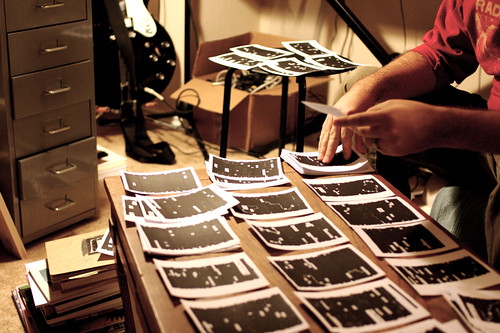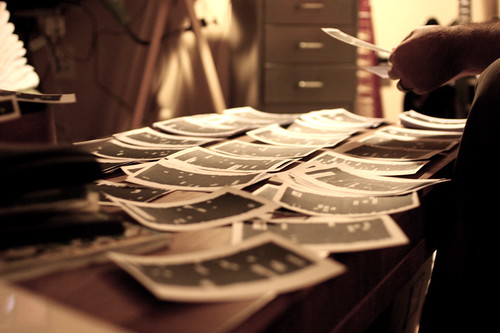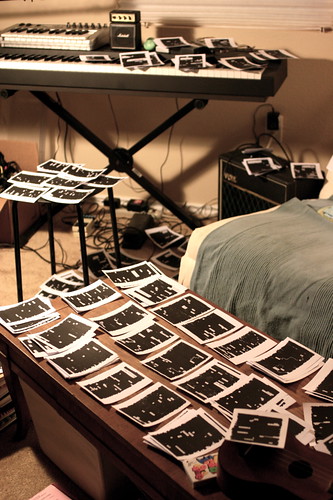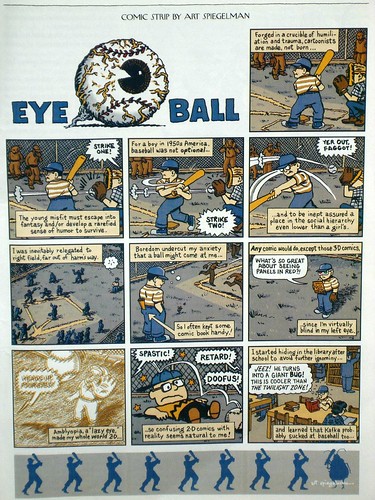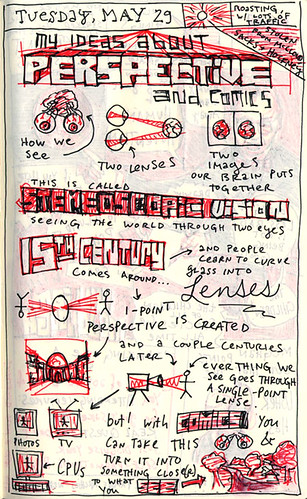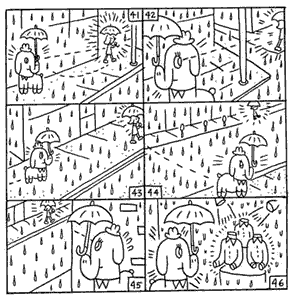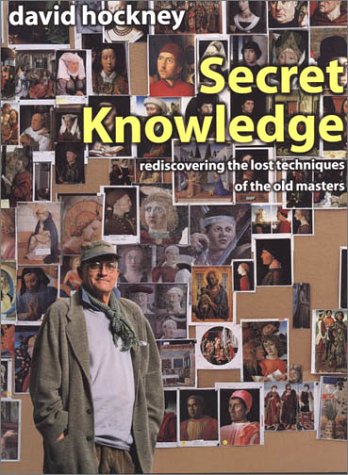Meg took these shots of me working on the book. At this stage, I have about 175 poems scanned and cleaned up. I’d like to have about 150. I was trying to organize them all on the computer in Adobe Bridge, but I wanted to be able to see them all, to touch them, to shuffle them, stack them, sort through them. I decided to print them all out on paper. Now I’m looking for themes and threads, stories and characters, trying to make this thing flow.
It’s a lot like making a mixtape, or sequencing an album. The way the songs butt up against each other can totally color their meanings. One could craft a hundred different albums from the same batch of songs.
The task now is looking. Trying to see a book in this stack of pages.
Dan Roam, in his book, The Back of the Napkin, says “there are four basic rules to apply every time we look at something new.”
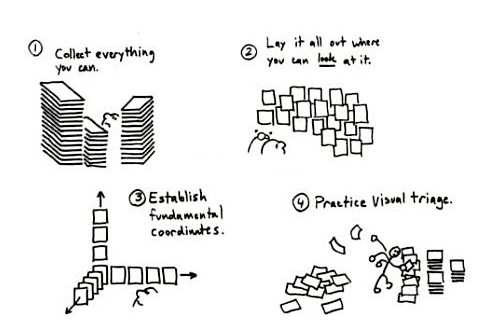
1. Collect everything we can to look at—the more the better (at least at first).
2. Have a place where we can lay out everything and really look at it, side by side.
3. Always define a basic coordinate system to give us a clear orientation and position.
4. Find ways to cut ruthlessly from everything our eyes bring in—we need to practice visual triage.
Lay it all out where you can look at it. As Edward Tufte says, “Whenever possible, show comparisons adjacent in spaces, not stacked in time.”
Looking leads to seeing which leads to meaning.
David Hockney came to his theory on optics and painting by pinning a photocopied timeline of paintings down one wall of his studio:
He looked and was able to see a story.
Let’s hope it works for me.
